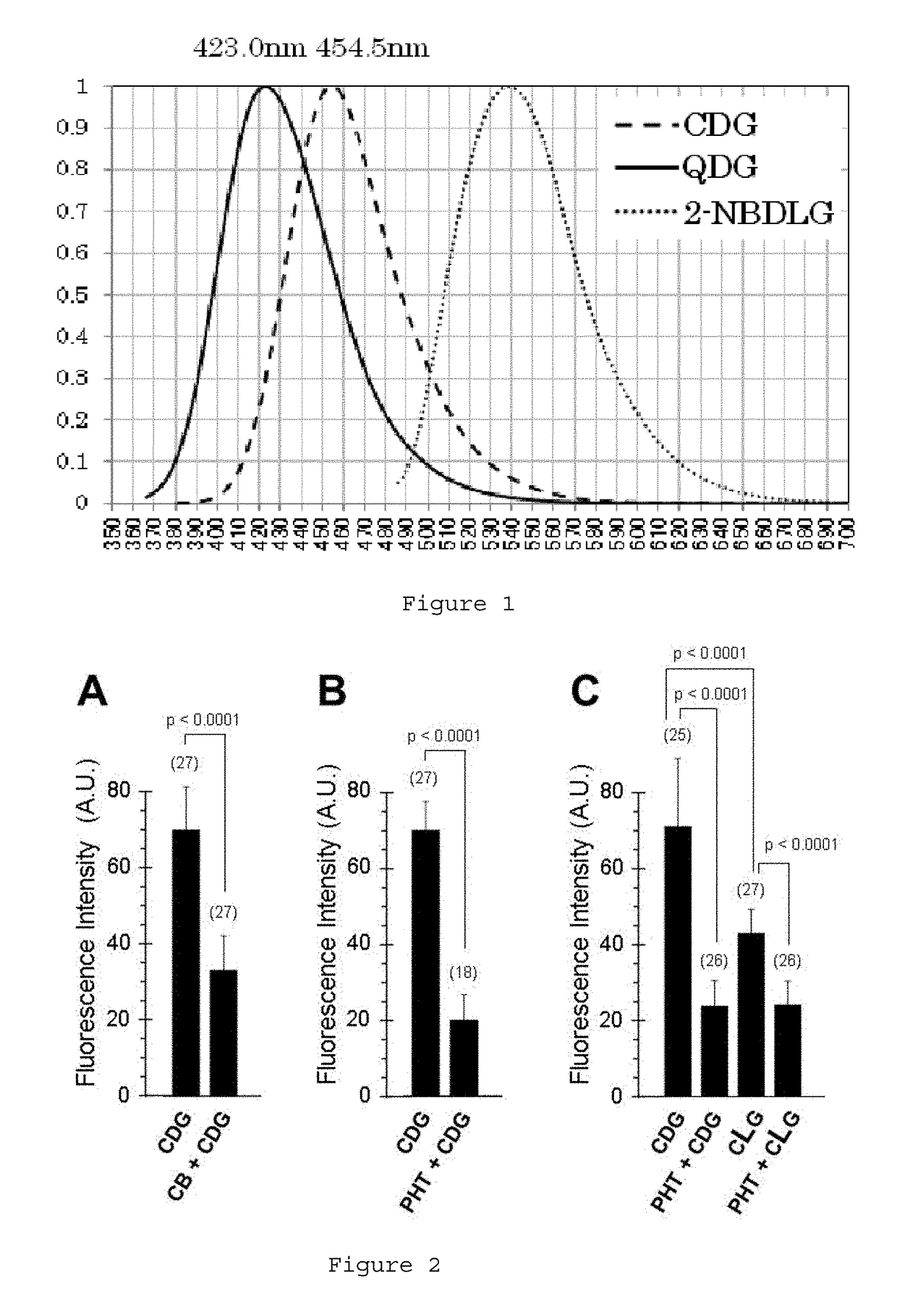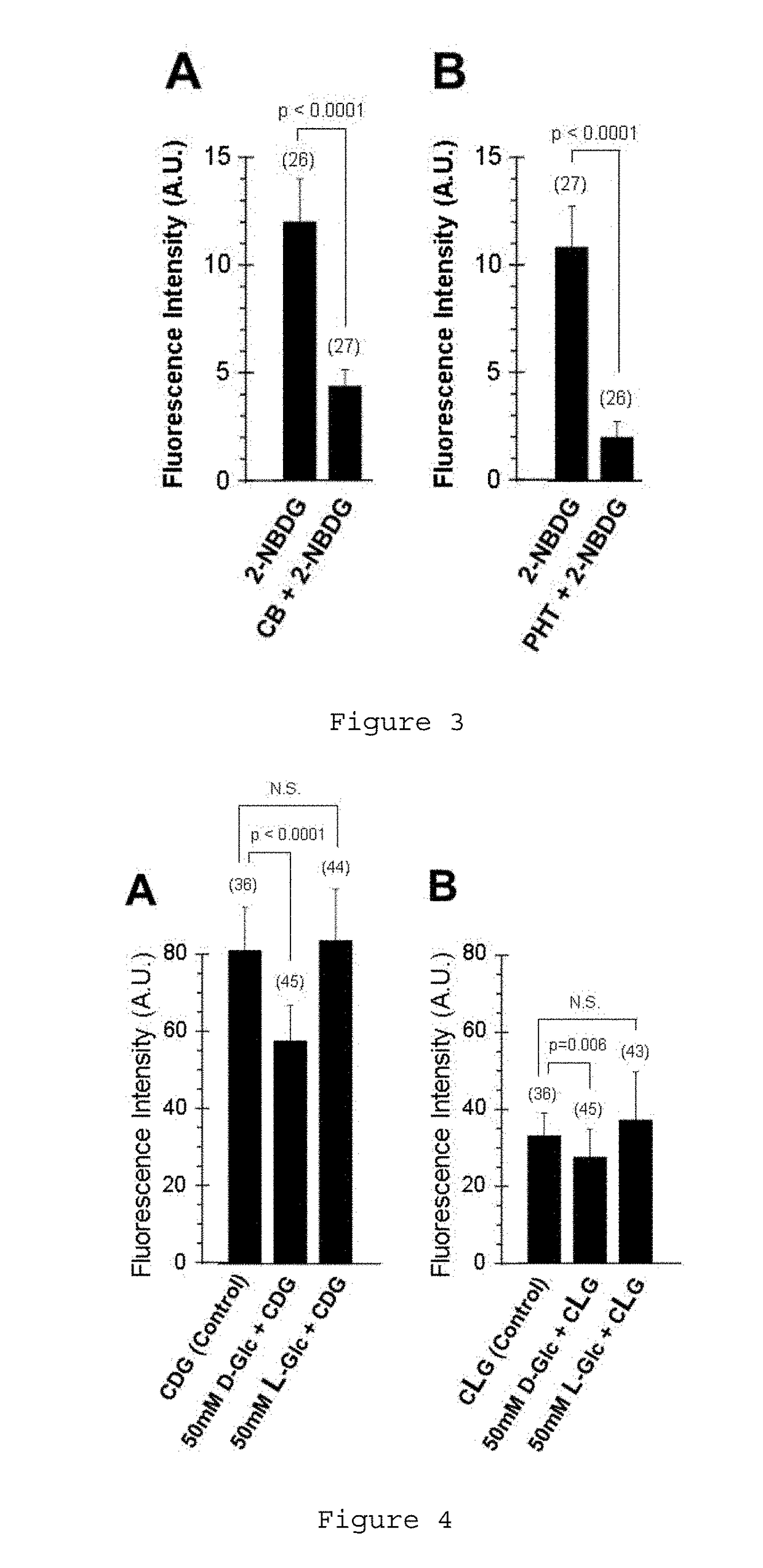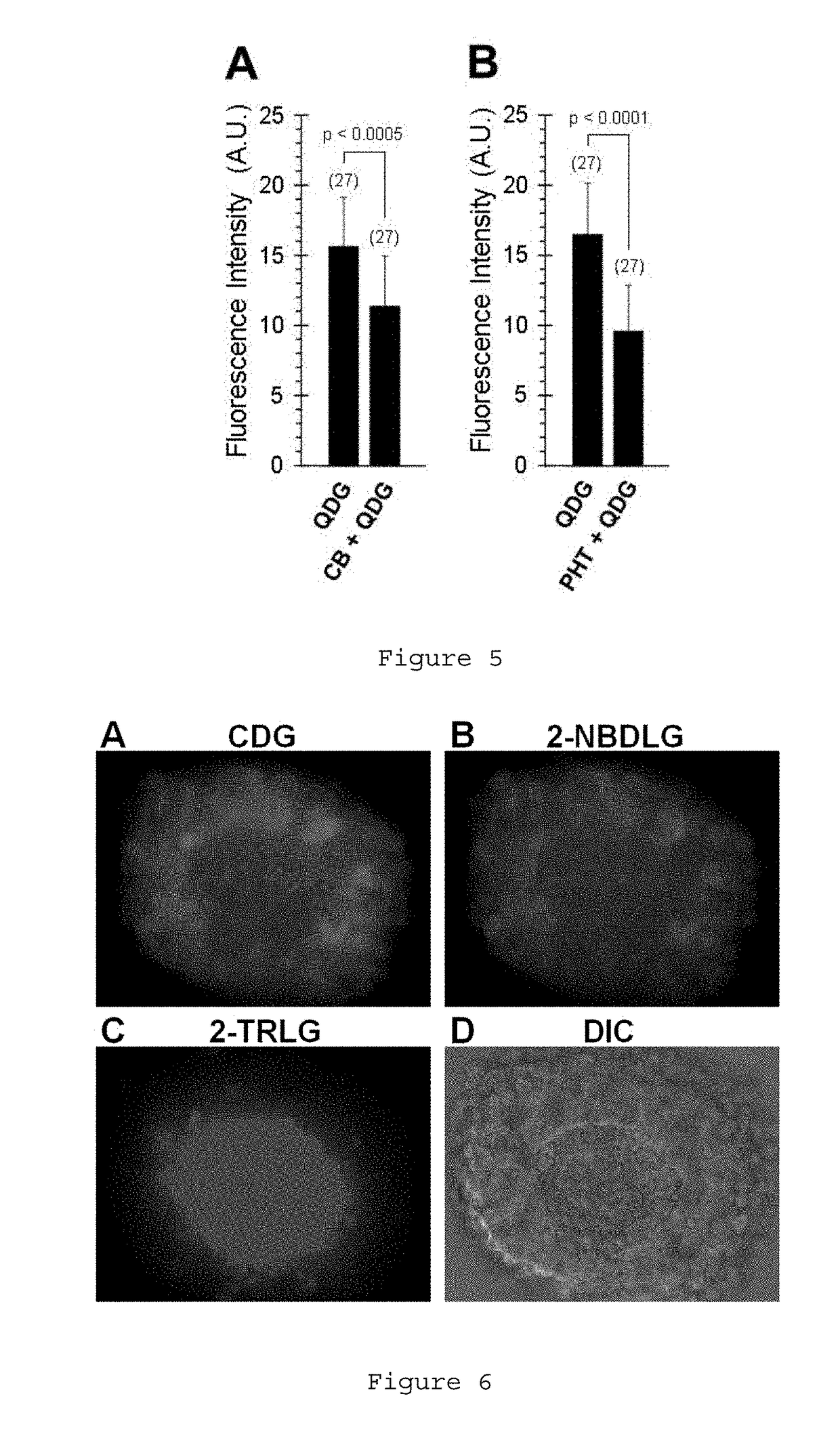Novel glucose derivative, and cell imaging method and imaging agent using said derivative
a cell imaging and derivative technology, applied in the field of new glucose derivatives, can solve problems such as the discrimination between them, and achieve the effect of high contrast and high contras
- Summary
- Abstract
- Description
- Claims
- Application Information
AI Technical Summary
Benefits of technology
Problems solved by technology
Method used
Image
Examples
example 1
of CDG
[0136]CDG was synthesized from D-glucosamine hydrochloride as follows:
(1-1) Synthesis of 2-oxo-2H-chromen-7-yl trifluoromethanesulfonate Represented by Following Formula
[0137]
[0138]In an argon atmosphere, 4-methylumbelliferone (100 mg, 617 μmol) was dissolved in pyridine (6 mL), and the solution was cooled in ice. Trifluoromethanesulfonic anhydride (114 μL, 679 μmol) was added dropwise thereto. Then, the mixture was stirred at room temperature for 5 hours. After the completion of the reaction, the reaction mixture was subjected to extraction with ethyl acetate, and the extract was washed with saturated saline. The organic layer was dried over anhydrous sodium sulfate, and the solvent was distilled off. The residue was purified using a silica gel column (SiO2, 20 g) to obtain the compound (160 mg, 88%) as a white solid.
(1-2) Synthesis of 2-deoxy-2-(2,2,2-trichloroethoxycarbonylamino)-D-Glucose Represented by Following Formula
[0139]
[0140]D-Glucosamine hydrochloride (10 g, 46.4 m...
example 2
of CLG
[0150]CLG was synthesized in the same way as in CDG using L-glucosamine hydrochloride instead of D-glucosamine hydrochloride. The yield was 13.2 mg, and the percent yield was 32%. Also, results of analyzing the obtained compound are as follows.
[0151]1H NMR (D2O, 400 MHz): δ 7.75 (dd, J=1.83 Hz, 9.15 Hz, 1H, Coumarin-4H), δ 7.31 (d, J=8.69 Hz, 0.6H, Coumarin-5Hα) δ 7.30 (d, J=8.69 Hz, 0.4H, Coumarin-5Hβ), δ 6.69-6.65 (m, 1H, Coumarin-6H), δ 6.60 (s, 1H, Coumarin-8H), δ 6.02 (d, J=9.61 Hz, 0.6H, Coumarin-3Hα), δ 6.01 (d, J=9.15 Hz, 0.4H, Coumarin-3Hβ), δ 5.21 (d, J=3.20 Hz, 0.7H, H-1α), δ 3.82-3.22 (m, 6H, H-2, H-3, H-4, H-5, H-6, H-6′); ESI-MS: C15H18NO [M+H]+ calc.: 324.1. found: 324.1.
example 3
of QDG
[0152]QDG was synthesized from D-glucosamine hydrochloride as follows:
(3-1) Synthesis of N-(3-iodophenyl)cinnamamide Represented by Following Formula
[0153]
[0154]m-Iodoaniline (10 g, 45.7 mmol) and potassium carbonate (9.47 g, 68.6 mmol) were suspended in acetone / water (½, 94 mL). To the suspension, cinnamic chloride (9.3 g, 56.2 mmol) was added dropwise, and the mixture was stirred for 30 minutes. The reaction was terminated by pouring to ice water. The deposited white solid was collected by filtration and washed with water and diethyl ether. The solid was dried overnight using a pump to obtain the compound (17.6 g, quant) as white crystals.
(3-2) Synthesis of 7-iodoquinolin-2(1H)-One Represented by Following Formula
[0155]
[0156]In an argon atmosphere, the compound N-(3-iodophenyl)cinnamamide (1.0 g, 2.86 mmol) was dissolved in chlorobenzene (28.6 mL), and the solution was cooled in ice. Aluminum chloride (1.91 g, 14.3 mmol) was added thereto, and the mixture was heated to 100° ...
PUM
 Login to View More
Login to View More Abstract
Description
Claims
Application Information
 Login to View More
Login to View More - R&D
- Intellectual Property
- Life Sciences
- Materials
- Tech Scout
- Unparalleled Data Quality
- Higher Quality Content
- 60% Fewer Hallucinations
Browse by: Latest US Patents, China's latest patents, Technical Efficacy Thesaurus, Application Domain, Technology Topic, Popular Technical Reports.
© 2025 PatSnap. All rights reserved.Legal|Privacy policy|Modern Slavery Act Transparency Statement|Sitemap|About US| Contact US: help@patsnap.com



